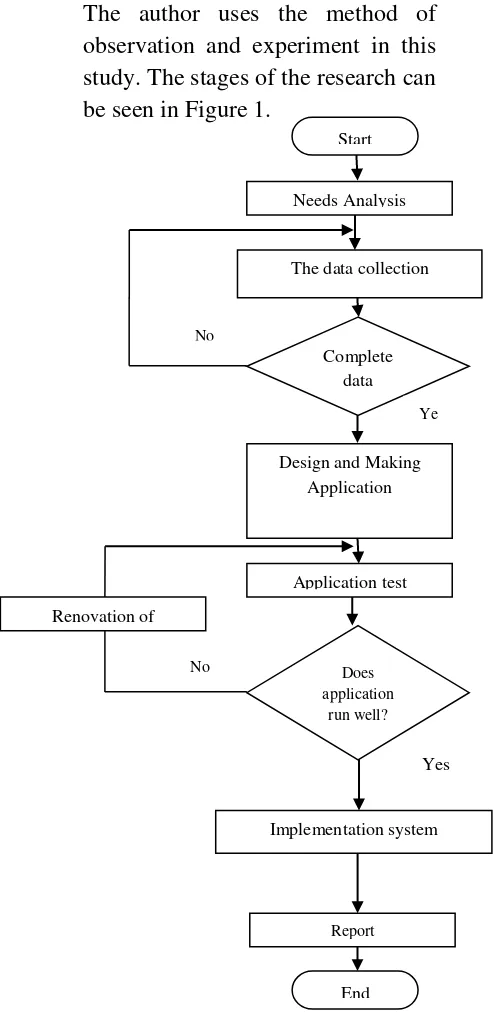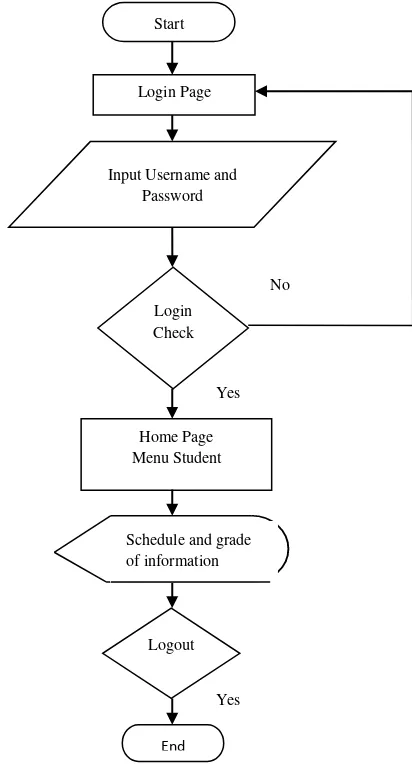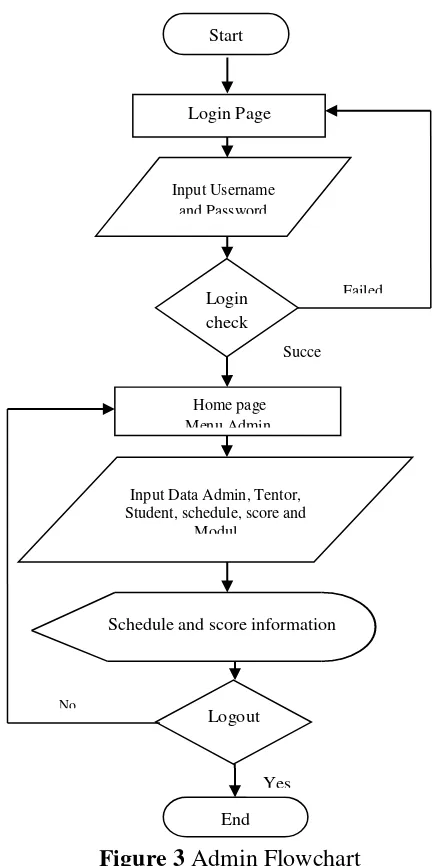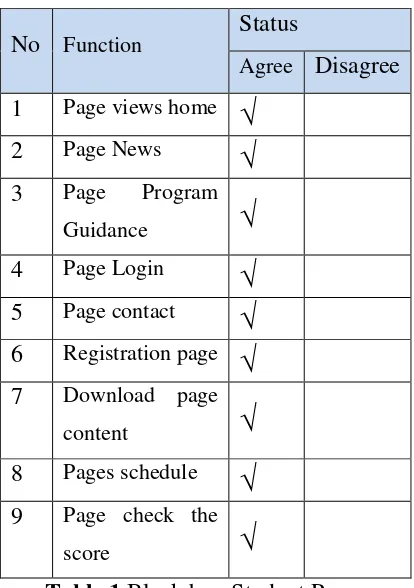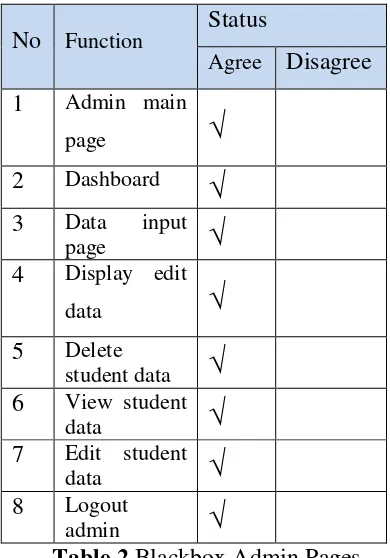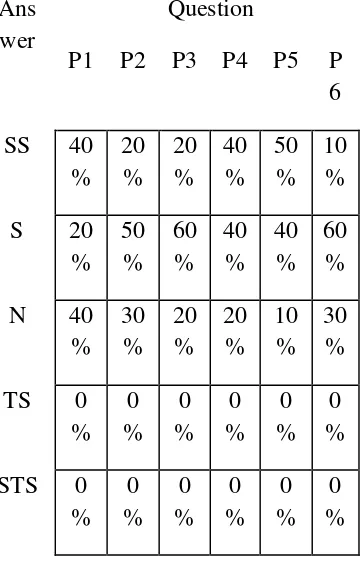Design of Web-Based After School Tutoring Information System
(Case Studies in
“SiPintar”
After School Tutoring Mantingan)
Article Publication
Submitted as a Partial Fulfillment of the Requirements for Getting Bachelor Degree of Department of Informatics in the
Faculty of Communication and Informatics
By:
CHANDRA TRI SUSENO
NIM: L200102015
DEPARTMENT OF INFORMATICS
FACULTY OF COMMUNICATION AND INFORMATICS
MUHAMMADIYAH UNIVERSITY OF SURAKARTA
Design of Web-Based After School Tutoring Information System
(Case Studies in
“SiPintar”
After School Tutoring Mantingan)
Chandra Tri Suseno, Umi Fadlillah, Gunawan Ariyanto
Department of Informatics, Faculty of Communication and Informatics
Muhammadiyah University of Surakarta
Email: Chandra.ard@gmail.com
Chandra Tri Suseno. L200102015 Design of Web-Based After School Tutoring
Information System (Case Studies in “SiPintar” After School Tutoring Mantingan).
Study Programs at the Department of Informatics, Faculty of Communication and
Informatics Muhammadiyah University of Surakarta.
This study aims to (1) Establish a media information website that can provide
information to the public. (2) Building a website can do the management of information
media student data accurately and precisely. (3) To assist and facilitate the process of
monitoring the progress of student learning. Methods this study uses observers,
interviews, and a literature method, this method for obtaining accuracy and validation of
precise data, in order to get maximum results for the user. The results show the
implementation of information media websites that can provide information to the
public, the web pages were made in accordance with the design. Not only coding
programs, web pages are also designed so that it looks attractive. In addition to the
program administrator can edit, delete, and can add to the list of students who want
value fed by name and subjects taken by students. The results of subsequent research,
students and parents can access the value of the development and learning of students
accessing material simply by entering your name and email address.
INTRODUCTION
After school tutoring can be regarded as an extra support for students to get better results so that learning becomes easier. Sometimes there is a
lesson in a school that poorly
understood by students and tutoring comes as a solution that is as a means of consultation for students’ better understanding of the lesson.
After school tutoring can be an appropriate means to understand the lessons that have not been understood, fun learning method certainly be the one
of the after school tutoring
characteristic. However, students are confusing about the place to get the information of after school tutoring. Media websites are now experiencing rapid development as a medium for data management, and can monitor learning activities such as attendance and schedule so that parents can monitor their progress during learning activities.
"SiPintar" After School Tutoring, founded in August 2010 by Mr. Ridwan Mahmudi in Depok as a pilot project. At first, the faculty has a 6 teacher with 20 students and now the number has reached more than 100 students along with better facilities. For expansion, it will open a branch "SiPintar" after school les Mantingan on July 10, 2013.
This branch is still using manual systems to handle their new students, so it takes a little bit. This course requires an organized system, if it is supported only by manual systems, efficiency and effectiveness in the presentation of this information will not be achieved and
will have an impact on the slow service to the students themselves.,
After learning this, the researchers will design and build a web-based information systems. It is expected the efficiency and effectiveness of the presentation of information will be overcome.
LITERATURE REVIEW
a. Web
World Wide Web (WWW) or commonly referred to as the Web, is one of the resources that the internet is growing rapidly. Web information is distributed through hypertext approach, which allows a short text to be a reference to another document open. With this hypertext approach one can obtain information by leaping from one document into another document. (Eriko Dwi, 2009)
b.Information
Raymond McLeod (1995) in thesis Bangun Teja S defines information as data that has been processed into a form that is more
meaningful for the recipient.
c. PHP
PHP is a standard language used in the world of websites. PHP is a scripting programming language in the form of money placed on the web server. If seen from the history, beginning PHP was created from ideRasmus Lerdof that make a perl script. The script is meant to be used as a program for himself. But, then again so was developed into a language called "Personal Home Page". This is the beginning of the emergence of PHP to date. (Nugroho, 2009).
d.CodeIgniter
CodeIgniter is an application open source form framework with MVC (Model, View, Controller) for building dynamic websites using PHP.Where Model and interactions associated with the data to the Responsive layouts, buttons, forms,
tables and components - components of other javascript.
METHOD
The author uses the method of observation and experiment in this study. The stages of the research can be seen in Figure 1.
Figure 1. Flow of research
No
Design and Making Application The data collection
a. Starting from the needs analysis. At this stage the researcher analyzed a variety of needs such as hardware and software requirements for this design as well as information relating to the researcher would do in this thesis.
b. Collecting data and needs. At this stage the researcher collected data as well as a variety of needs that will be used in the design and manufacture
of design and manufacturing
systems.
d.Design and manufacture of the system. At this stage the researcher to design and manufacture the system in accordance with the data and also the needs that have been obtained.
e.Testing the system. After the
researchers finished the design and manufacture of the system, the next step is to test the system is running well or not, if the system made an error it will be repaired and re-testing the system.
f. Implementation of the system. At this stage the researcher is ready to implement the system that has been designed and manufactured after
successful testing of the system and there is no error.
g. Report generation. After completion of all stages of the analysis to the implementation of the system, the researchers will create a report of all
matters relating to research
conducted.
The student flowchart like in the Figure 2
Figure 2 The flowchart of student.
Input Username and Password
From Figure 2 it can be described as the
flow of students following flowchart:
a. Login page, the page that is used for
user login.
b. Username and Password, the page
where the user is the student enter a
username and password that will be
used to access the student pages that
contain additional content such as a
check score, downloaded material,
check the schedule.
c. Check login, username and password
will be matched by the system, if
successful it will fit into the Student
Page if not then the system will return
to the Login Page.
d. Home page menu student, if the login
is successful then it will go to the home
page menu.
Admin Flowchart like in the Figure 3.
Figure 3 Admin Flowchart
From Figure 3 it can be described as the
flow of students following flowchart:
a. Login page, the page that is used for
user login
b.Username and Password, username
and password: used to enter admin
Start
Login Page
Input Username and Password
Login check
Home page Menu Admin
Input Data Admin, Tentor, Student, schedule, score and
Modul
Logout
End
Schedule and score information
Failed
No
Yes
pages, the username and password that
is different than the student password.
c.Check login, username and password will be matched by the system, if successful it will fit into the admin page if not then the system will return to the Login Page.
d.Home Page
To display menus that relate to student data and information.
e.Input Data Admin, Tentor, Student, schedule, score and Modul. To update the data from the admin, tutor, students and information. admin can remove add or edit the data on this page.
f. Schedule anda score information Admin can add, delete and edit the information that will be shown to students
RESULT AND DISCUSSION
a. Program Testing
The process of testing system done by inputting data and checking on each menu that has been created. This check is done by the researchers themselves.
When all processes have been
successfully carried out and run smoothly, then the system information of SiPintar web-based after school tutoring is ready to use. From the portal with black box testing has been done by researchers obtain the following results:
Testing with table black box on the
front page is shown in Table 1.
Table 1. Black Box Student Pages
No Function
Status
Agree Disagree
1 Page views home
√
2 Page News
√
3 Page Program
Guidance
√
4 Page Login
√
5 Page contact
√
6 Registration page
√
7 Download page
content
√
8 Pages schedule
√
9 Page check the
score
√
Table 2. Black box admin page
Table 2 Blackbox Admin Pages
b. Testing the System with a Questionnaire
Table 4.3. Tabulation of Student SiPintar
Testing with this questionnaire
addressed to 10 students SiPintar. The
3 Information
about SiPintar
results of the questionnaire are shown in Table 4.3
Testing is done with a questionnaire to determine the assessment guide users towards Design of Web-Based After School Tutoring Information System (Case Studies in “SiPintar” After
School Tutoring Mantingan).
From table 4.3 there are six criteria that are used as an assessment of the website users, and users just stating his opinion on the application by choosing whether SS = Strongly Agree, S = Agree, N = Neutral, KS = Disagree, and TS = Strongly Disagree.
The results of the questionnaire data calculations are shown in Table 4.4.
Figure 4.17 Student Respondent Graphic
Based on the figure above can be concluded that the application of this system can work well, especially in terms of functional which can facilitate students in obtaining information.
Discussion
The Design of web-based after school tutoring information system is an application that will help simplify the admin to manage the data that will be addressed to students and visitors to the website online. System information is accessible to anyone, anywhere and anytime as long as there is internet connection. web-based after school tutoring Information system is an application built to improve services to students and administrators in the management of data. Design of web-based after school tutoring Information
system there is certainly some
advantages and disadvantages when compared to similar applications.
The advantages of Web-Based After School Tutoring Information System are :
1.The public may information about SiPintar.
2.Improve services SiPintar After School Tutoring.
3.Promote SiPintar After School
Tutoring.
4.Students can see the score of learning outcomes in SiPintar After School Tutoring online.
5.Participants received information about the mentoring program in SiPintar After School Tutoring.
Lack of Web-Based “ SiPintar” After School Tutoring Information System are :
1.Display Web-Based After School Tutoring Information System still
simple that still needs much
improvement.
2.The security system is still
inadequate.
Conclusion
From the results to agency website creation education, the conclusion is as follows:
1. The website is an excellent medium for providing information services to the public and students SiPintar because it can be accessed anytime and anywhere.
2.Website provide information to
management SiPintar about
community needs, so it can be used as fill in decision making.
Bibliography
Ade. 2009.” Apa itu CodeIgniter”. At (http://www.kuliahit.com/kuliahit/article/24/Apa-itu-CodeIgniter). Accessed October 9, 2013.
Amanu, Gilang.S. 2012.”Pengenalan Twitter Boostrap”. At
(http://jagocoding.com/tutor/233/Pengenalan_Twitter_Bootstrap). Accessed October 13, 2014.
Banisaleh. .”Mengenal Codeigniter (PHP Framework)”. At
(http://www.stmik.banisaleh.ac.id/webansal/berita-143-mengenal-codeigniter-php-framework.html). Accessed, October 4, 2014.
Basuki. Pribadi Awan. 2014:13.”Proyek membangun website berbasis PHP dengan
Codeigniter”. Yogyakarta. Lokomedia.
Cahyo. Eriko Dwi. 2009.”Perancangan Sistem Informasi Berbasis Web Pada Sma Kartika I-1 Medan”. Thesis. USU Medan.
Hendraswari, Putri A. 2013. “Pembuatan Website Sebagai Media Promosi Pada
Amikom Game Dev Menggunakan Framework Bootstrap”. Thesis. AMIKOM
Yogyakarta.
Kuprul. 2012.” Tutorial Adobe Dreamweaver CS6”.Dalam (http://kuprul.com/tutorial-adobe-dreamweaver-cs6-77186/). Accessed October 5, 2014.
Kadir , Abdul. 2009:15.”Membuat Aplikasi Web dengan PHP dan Database MySQL”.
Yogyakarta. Andi.
Liatmaja, Rizka dan Indah Uly Wardati. 2013. “Sistem Informasi Akademik Berbasis Web pada Lembaga Pendidikan Belajar Be Excellent Pacitan”. Indonesian Jurnal on Networking and Security (IJNS). vol 2 no 2. Accessed October 7, 2014.
Mulhim, Imam. 2014. “ Desain web untuk desktop dan mobile”. Palembang. Maxicom.
Mcleod, Jr, R. 1996.”Sistem Informasi Manajemen, (Edisi Bahasa Indonesia)”, Jakarta.
Prenhallindo,
Nugroho, bunafit. 2009. “PHP dan mySQL”. Yogakarta. Andi
Situmorang. 2010. “Sistem Informasi Berbasis Web”.
(repository.usu.ac.id/bitstream/.../4/Chapter%20II.pdf). Accessed October 13, 2014.
Sulaksono, bangun.2014. “Rancang Bangun Sistem Informasi Berbasis Web Pada Organisasi Purna Paskibraka Indonesia Gunungkidul Sebagai Media Informasi Dan Publikasi”. Thesis. AMIKOM. Yogyakarta.
